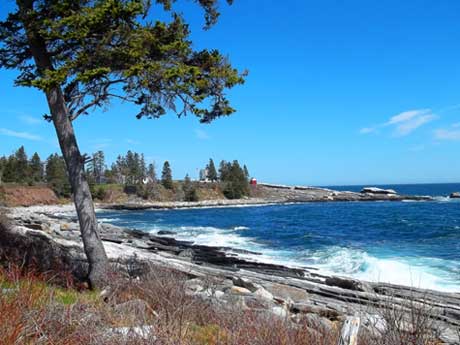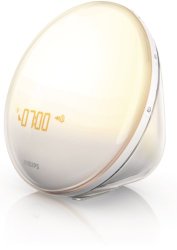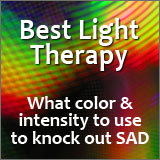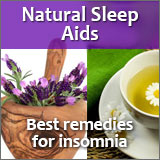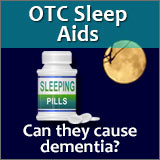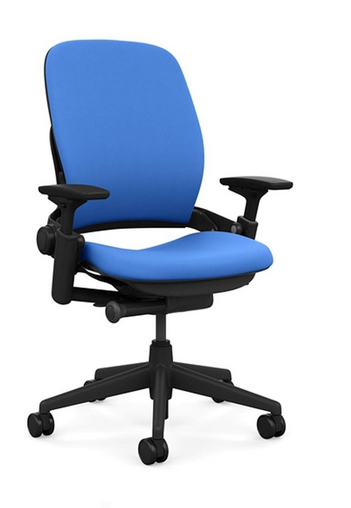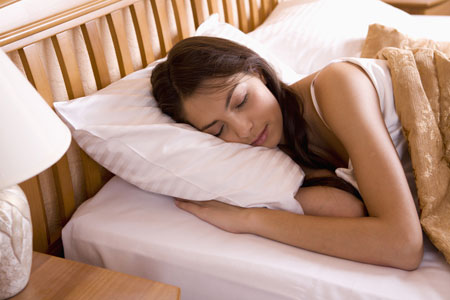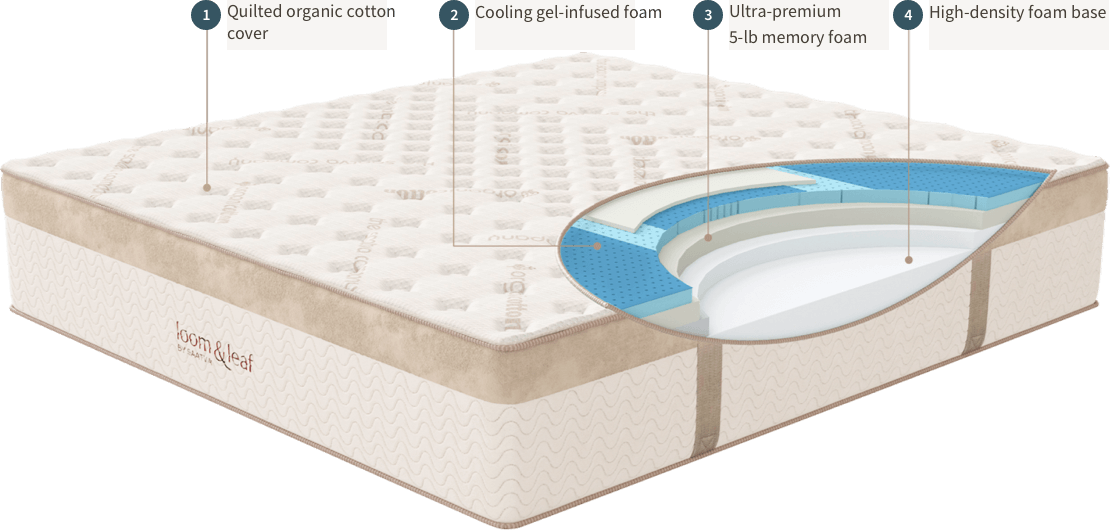5 Tips for Seasonal Affective Disorder Treatment
One of the great things about seasonal affective disorder treatment is that a lot of what works best is natural.
And what could be more natural than sunlight?
Therefore...
Treatment Tip #1: Dance in the sunlight
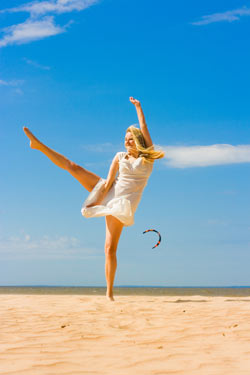
"The dance of a bee drunken with sunlight." This line by John Gould Fletcher in his poem Irradiations leads us to your first treatment option...
Actions to take:
If you're hibernating indoors, get thy buttocks off the couch (or out of your cubicle) and take them outside into the sunlight! Just doing this one thing can often help quite a bit in your battle with seasonal affective disorder (SAD).
Your goal should be to take every opportunity you can during the late fall and winter months to drape yourself with natural rejuvenating light from the outdoors.
"But what if it's cloudy?" you ask. Doesn't matter. Even cloudy days can provide some light to give a bit of relief for the symptoms of seasonal affective disorder. What you're aiming for is getting light into your eyes, not sunlight onto your skin.
In the morning, get some exercise by walking with a friend. Or walk your dog if you have one (my dog is my friend!). I realize your time may be limited but see if you can get outside for an hour or so each day.
And for when you are indoors, throw back the curtains and let Mother Nature's light stream in your windows.
Why it works:
Light striking the retina in the eye changes the chemistry in the brain. It raises serotonin levels. This in turn improves mood and helps to ward off irritability and other symptoms of seasonal affective disorder.
And to make this work, it needs to be bright light. Lux is a term that is used to measure the intensity of light. Indoor lighting puts off about 200 to 500 lux. Sunlight, on the other hand, can put off as much as 100,000 lux.
Treatment Tip #2: Fill your eyes with even more light
"His eyes were lit like a morning sun coming up over harvest fields." So wrote Carl Sandburg in What Six Girls with Balloons Told the Gray Man on Horseback. And that brings us to your second seasonal affective disorder treatment.
Action to take:
Probably the most effective way to "light your eyes" is with light therapy treatment in the form of light box therapy.
Of course, this comes after you meet with your health care provider. And if they recommend you sit in front of a light therapy lamp for your seasonal affective disorder treatment.
Why it works:
Light therapy research has shown that using a set of fluorescent light bulbs in a special light fixture (called a light box) allows a controlled, yet intense, amount of light to get into your eyes.
You don't look directly into these bulbs. Instead, you sit close to the light therapy box...one to three feet away...and position your head so you face the box.
Keep your eyes open and read, write, eat, or talk on the phone. You could even have one of these lights for your office and get some work done while getting exposure to light.
The time you need for your own therapy will vary. For you, perhaps as little as 10 to 15 minutes. For someone else, perhaps an hour.
Your physician or health professional will help you as you experiment to see what amount of time works best for you. You'll also have to see which time of day best suits you in terms of results. Many people report better benefits in their treatment for SAD if they use the box first thing in the morning.
Different light boxes deliver different amounts of lux (light intensity). Some are as high as 10,000 lux, an amount that many people find effective for their depression. The amount of lux the box emits will also determine how long you may need to sit in front of one.
Blue or while light?
White light has usually been used as the best light therapy for light boxes, and it does work well. However, recent studies show that blue enriched white light may be more effective for seasonal affective disorder treatment. Plus, the blue light can be used at a lower intensity.
It’s impossible for me to tell you what color is best for you yet I can give you some choices to consider. For over five years I have been recommending the Philips GoLITE because it works and it’s bright.
There are two kinds over at Amazon. One is the Philips HF3422 GoLITE BLU. This one has a cord so you’ll need an electrical outlet nearby.
The other is the Philips HF3429 GoLITE BLU rechargeable. This one is $44 more because it has a rechargeable battery as well as a cord. Gives you some options to carry it around with you and use it where there are no electrical outlets.
NatureBright and Verilux are two other companies dedicated to helping people shake the winter blues with light therapy.
As you can see, I’ve provided links below to Amazon for all of these light therapy products.
No matter which light box you choose, here’s some good news. One of the best things about bright light therapy boxes for seasonal affective disorder treatment is this: Many people find relief for their seasonal depression in as little as 3 to 4 days.
Are there side effects from seasonal affective disorder treatment?
Problems with light treatment are not common. But some people do report headaches, eyestrain, and sleep difficulties after using the boxes in the evening. People who do have insomnia due to the lights can shift their use of the boxes to the morning.
Two more things to note. First, some people find that combining the use of light box therapy with antidepressant medications is their best seasonal affective disorder treatment. Second, to be safe, people with eye disease should see an eye doctor before using light therapy.
Update on seasonal affective disorder light therapy
I'm seeing a lot more traffic to my website about SAD and seasonal affective disorder light therapy.
Thus, I've been searching through the medical journals and I've decided to expand this information on light boxes for SAD by addressing the question: what is the best light therapy? Please see the article below.
Treatment Tip #3: Thunder, oceans, and country living
Mother Nature has some wonderful medicine hidden in her apron pockets. And you may find that this next seasonal affective disorder treatment that she provides is a little surprising.
Action to take:
Live in the country or by the ocean.
Why it works:
Apparently, air that contains high concentrations of negative ions has a positive effect on mood. Thunderstorms create these negative ions. And both a raging ocean surf and country air contain considerably more negative ions than city air.
But if you can't go jump in the ocean and country living isn't your thing, a negative ion generator might be a SAD treatment for you.
Treatment Tip #4: Awaken to the light
An Oscar Wilde metaphor, from The Young King, leads us into another of the treatments for SAD:
"Through the window he saw the long grey fingers of the dawn clutching at the fading stars..."
Action to take:
Consider dawn simulation. A dawn simulator is a light therapy timing device that creates the awakening of dawn right in your bedroom while you are in the last phase of your sleep.
Why it works:
This device has an effect on the biological clock. It also puts the clamps on melatonin (which means waking up is easier). These actions in turn lead to an improved mood.
One study (Am J Psychiatry. 2006 Dec;163(12):2126-33) showed that both dawn simulation and negative air ionization can be effective alternatives to light therapy for SAD treatment.
Treatment Tip #5: Positive thoughts
Here's the final seasonal affective disorder treatment action to consider. One of the questions for your doctor you might want to discuss is about trying talk therapy, especially something called cognitive behavioral therapy (CBT). This is where you replace negative thought patterns with positive thought patterns.
And apparently it works! A recent study led by researchers at the University of Vermont (published in Behavior Therapy, September 2009) showed that CBT was more effective than light therapy. That's good news to the large percentage of people who do not respond well to light therapy as a seasonal affective disorder treatment.
Here are more articles you will find helpful
Here's A Free Audio for You On SAD Syndrome
Part 1: Depressed In Winter? Could Be Seasonal Depression.
Part 2: SAD Disorder. Facts. Studies. Statistics.
Part 3: 13 Symptoms of Seasonal Affective Disorder
Best Light Therapy for SAD: White, Blue, Green, or Red?
Return To Sleep Passport Home Page
